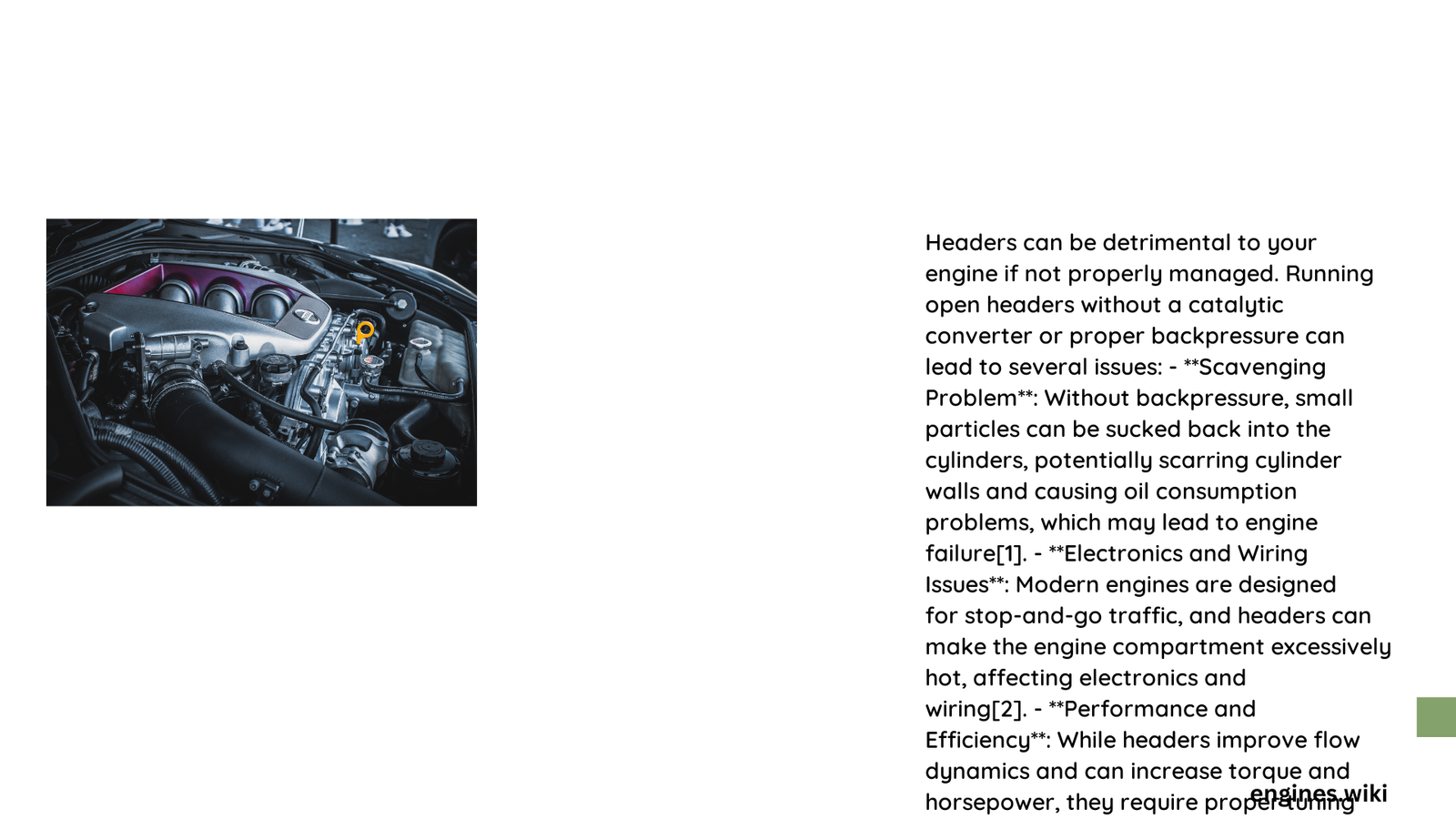Headers can significantly impact engine performance, presenting both potential benefits and risks. While they offer improved exhaust flow and potential horsepower gains, improper installation or low-quality headers might compromise engine longevity. Understanding the nuanced relationship between headers and engine health requires a comprehensive examination of technical factors, performance metrics, and potential mechanical implications.\n\n## What Are Headers and Their Primary Function?\n\nHeaders are specialized exhaust manifolds designed to improve exhaust gas flow from an engine’s cylinders. Unlike standard cast iron manifolds, headers feature individual tubes for each cylinder, allowing more efficient exhaust evacuation and reducing backpressure.\n\n### Key Performance Characteristics\n\n| Header Type | Performance Impact | Installation Complexity |\n|————|——————–|————————–|\n| Long Tube Headers | High Performance Gain | Complex Installation |\n| Shorty Headers | Moderate Performance Gain | Easier Installation |\n| Ceramic Coated | Enhanced Heat Management | Medium Complexity |\n\n## Can Headers Potentially Damage Your Engine?\n\nHeaders can potentially impact engine performance through several mechanisms:\n\n1. Increased Exhaust Temperatures\n – Uncoated headers might generate excessive heat\n – Potential stress on surrounding engine components\n – Risk of premature wear on gaskets and seals\n\n2. Backpressure Dynamics\n – Unequal length headers create uneven exhaust flow\n – Potential for asymmetrical engine wear\n – Possible reduction in overall engine efficiency\n\n## What Factors Determine Header Performance?\n\nSeveral critical factors influence header effectiveness and potential engine impact:\n\n- Material Quality: Stainless steel vs. mild steel construction\n- Coating Technology: Ceramic vs. standard thermal barriers\n- Precise Manufacturing Tolerances\n- Compatibility with Specific Engine Configurations\n\n## How Do Headers Affect Engine Longevity?\n\nThe relationship between headers and engine health is complex:\n\n- Potential Performance Benefits\n – 5-10% horsepower improvement\n – Enhanced exhaust scavenging effect\n – Reduced internal engine stress\n\n- Potential Risks\n – Increased thermal load\n – Potential emissions system complications\n – Higher maintenance requirements\n\n## What Should Vehicle Owners Consider?\n\nBefore installing headers, consider:\n\n1. Consult professional automotive technicians\n2. Verify local emissions regulations\n3. Choose high-quality, vehicle-specific headers\n4. Plan for potential additional tuning requirements\n\n## Recommended Header Selection Criteria\n\n- Precise manufacturing tolerances\n- High-temperature ceramic coating\n- Equal-length primary tubes\n- Verified compatibility with specific vehicle model\n\n## Conclusion\n\nHeaders are not inherently bad for your engine when selected, installed, and maintained correctly. The key lies in understanding your specific vehicle’s requirements and working with qualified professionals.\n\n### References:\n- CarParts Performance Guide\n- Automotive Engineering Journal\n- Professional Mechanics Association

